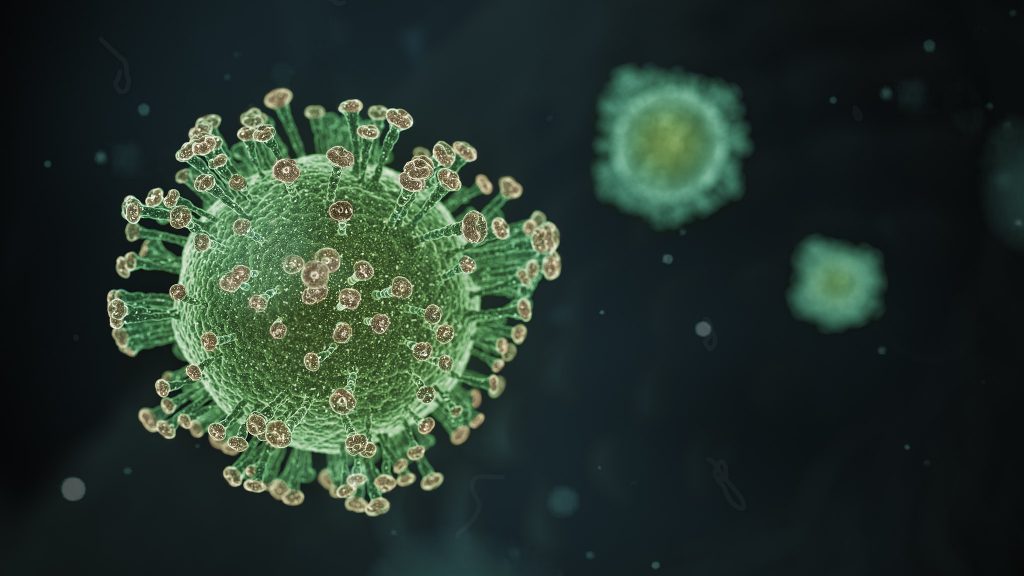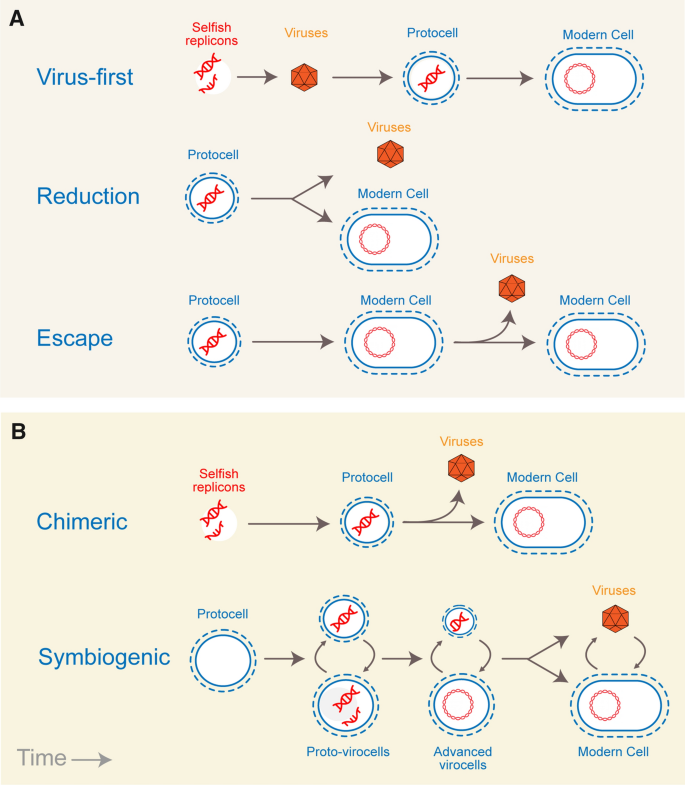My aim to publish a few posts has recently been foiled by an unexpected spanner in the works. My wife has apparently been in contact with someone who has tested positive for COVID-19 and therefore she has to isolate in our house for eight days. This means I have to deal with all contact with the outside world (i.e. shopping) and managing our children (i.e. ferrying them to and from school) while still working remotely on my day job. This has obviously reduced my available spare time to write posts on exoplanets and speculative evolution. However, since this pandemic has illustrated how a small piece of genetic information can have global effects I thought I could write a quick article on alien viruses and how they could be used in speculative evolution.

What is a virus?
Firstly, I should point out that I am a physicist and not a virologist so any discussion on this topic will be quite high level and based on references. With that said, what actually is a virus? The Encyclopaedia Britannica provides the following definition, though there are others:
Virus, infectious agent of small size and simple composition that can multiply only in living cells of animals, plants, or bacteria. The name is from a Latin word meaning “slimy liquid” or “poison.”
A more informal definition is a gift-wrapped nucleic acid where the nucleic acid is double or single stranded RNA or DNA. This nucleic acid is wrapped in a protein shell called a capsid and sometimes a lipid coat from the host cell as well. This capsid wrapped viral particle is known as a virion.
An important point to note in the description is that it does not say that viruses are alive. The mainstream view is that viruses are not alive as they are not capable of independent replication and instead require a host cell to replicate. An alternative view is that the living form of the virus is the virocell not the virion. The virocell is when a cell has been infected by a virus and its function has been hijacked to produce virions rather than split into two cells.
In practice, whether or not a virus is deemed to be alive is somewhat arbitrary as it depends on the definition of the word alive more than anything else. However, without a doubt viruses are biological replicators and fall somewhere on a continuum of such replicators. They are therefore perfectly within scope for speculative evolution even if they are not technically alive.
There is certainly much more that could be said about viruses but the basic view that the small pieces of genetic code that hijack cells to replicate is sufficient for now.
Astrovirology
An important question for speculative evolution is whether the distinction between cellular organisms (i.e. prokaryotes and eukaryotes) and acellular organisms (i.e. viruses) would necessarily occur on other worlds. This is probably impossible to answer as the origin of viruses on Earth is not known with certainty.
Three common hypotheses have been proposed that explain viral evolution as either cellular predecessors, reduced forms of cells, or entities that escaped cellular control:
- Virus-first hypothesis: Viruses evolved first and cellular life followed afterwards
- Reduction hypothesis: Viruses evolved from small parasitic cells
- Escape hypothesis: Viruses evolved from fragments of genetic material that escaped from cells
Other more sophisticated hypotheses exist involving a different sequence of events but they are beyond the scope of this quick post.
As there are several possible routes via which viruses could conceivably evolve as a parasite on cellular prey it is not unreasonable to assume that virus-like “life” could evolve on other planets. Indeed, the small field of astrovirology is devoted to considering such possibilities. It is not clear what observables an alien virus might produce on an exoplanet but that doesn’t mean that it cannot have a large effect on the life on that planet.
Fictional viruses
In fiction, viruses are often used to define a particular world or scenario. More recently this has perhaps been dominated by viruses that produce zombies, vampires or werewolves. However, there are also examples of alien viruses influencing the shape of fictional worlds.
The Spatterjay virus is a good example of this from Neil Asher’s novel The Skinner*. This virus has a large impact on the ecosystem of Spatterjay and is one of the primary driving forces in the novel.
Terran viruses, upon entering a cell, propagate from it and destroy it in the process. The Spatterjay virus roots in it and grows as a fibre to other cells, gradually networking the host body in a fibrous mass. These cells are then maintained perpetually. But the virus also engineers the DNA. Should the animal be damaged, or its environment change, the virus will alter its host to the optimum for survival in those circumstances. An animal can have its head cut off and yet not die; the virus will stimulate it to grow the necessities of survival. The usual result of this is the body growing a leech’s plug-cutting mouth, probably because the bulk of additional DNA the virus carries is of the leech, its original host. In this manner the virally infected prey become a perpetually reusable food resource for the leeches themselves. So it would seem that when the virus appeared, the leeches swiftly took advantage of it.
In Orson Scott Card’s Speaker for the Dead* the Descolada virus is a key story element which has a significant impact on alien life on Lusitania. When the virus infects humans it “unglues” their DNA with gruesome and fatal effect. However, for the native Pequeninos on Lusitania the Descolada virus has a surprising transformative effect that is revealed as the story progresses.
It is also worth mentioning Games Workshop’s Genestealers from the Warhammer 40,000 universe*. These six limbed aliens reproduce by injecting their DNA into a host (e.g. a human) using their ovipositor tongue. This DNA acts like a virus and infects the cells of the host. Modifications to infected germ line cells ensure that when the host itself reproduces the offspring is a first generation genestealer hybrid with traits from both its parents and also the genestealer. Each subsequent generation looks more like the host species and less like the genestealer until the fourth generation when the genestealer’s taint is barely noticeable. The fifth generation however reverts to pureblood genestealer so that the cycle can begin again.
Real viruses
Of course, the previous fictional examples are perhaps a little too extreme for more realistic speculative evolution but they do illustrate how viruses have been used to justify unusual forms of life. Even on Earth there are some viruses with interesting properties that can be used for plausible speculative evolution, for example:
- A “viral internet” can more efficiently transfer the spread of genes between unrelated bacteria.
- Viruses can stimulate photosynthesis in bacteria to improve the fitness of their host.
- Some viruses communicate with each other when the infect their hosts.
- Some bacteria appear to use viruses as weapons to kill their competitors.
- Multipartite viruses have their genome spread across multiple virions which combine when they simultaneously infect a single cell.
- Unusually, the cucumber mosaic virus can infect a wide range of different species.
- Giant viruses exist that are larger than some bacteria.
- Some viruses make virus factories in their hosts which are somewhat similar to a nucleus.
- Virophages are viruses that prey on larger viruses.
- Plasmids are small pieces of an organism’s DNA that are located outside of the chromosome and in some cases have been seen transferring between cells in a similar way to viruses.
- Viruses may have been the originators of DNA in an RNA world.
As you can see there are many unusual properties of viruses in the real world so it would not seem implausible for unusual properties to be present in fictional worlds. Speculative evolution rarely focuses on microscopic life but clearly viruses can significantly influence the direction of evolution in macroscopic life. Are there possibilities that seem plausible yet result in something alien? Almost certainly.

